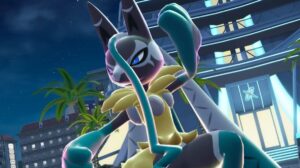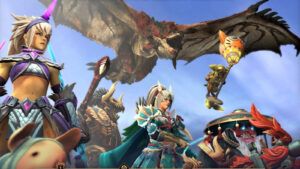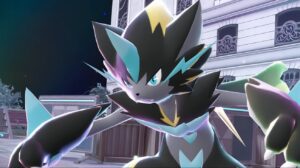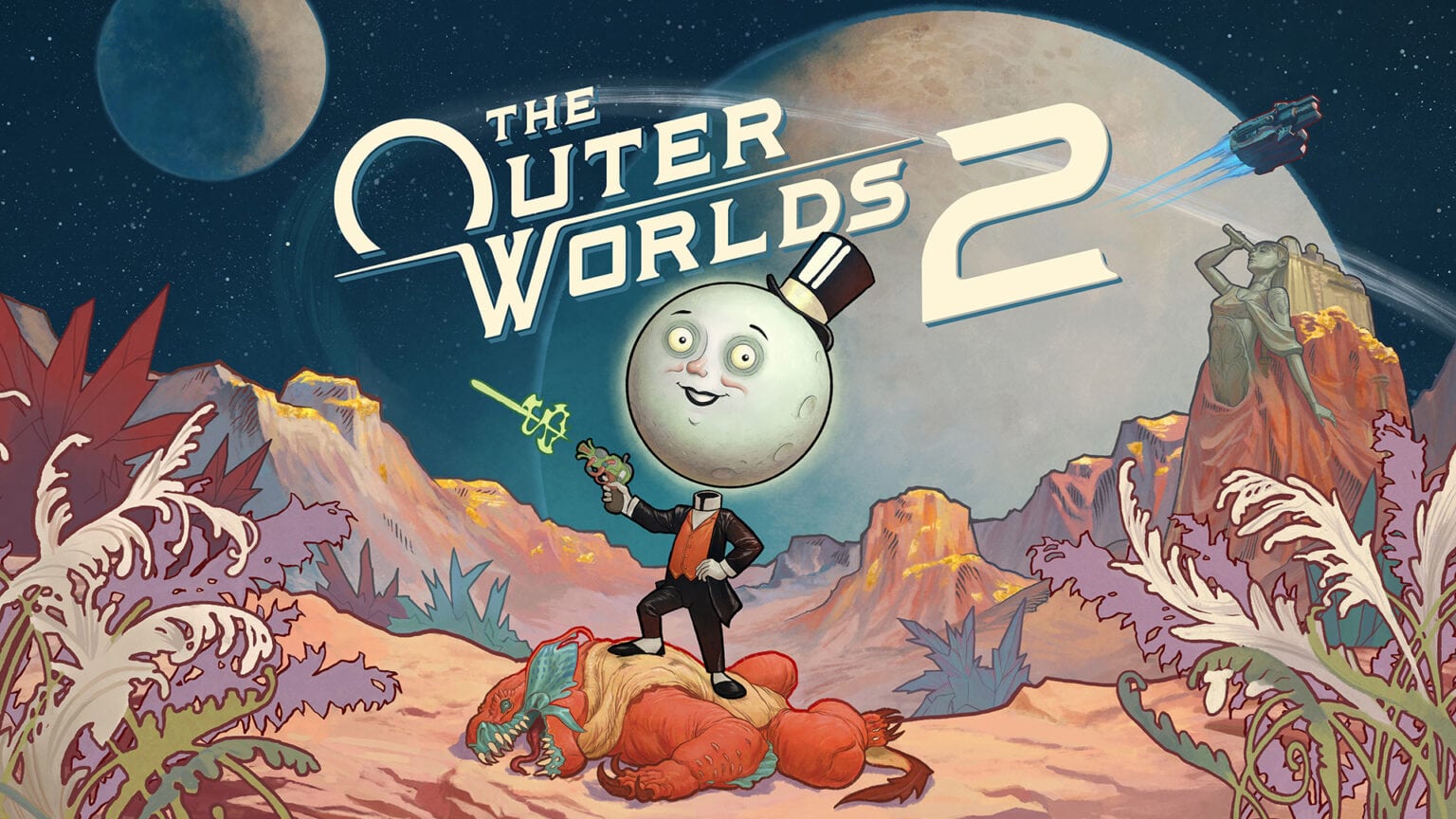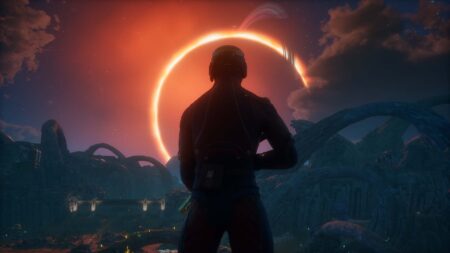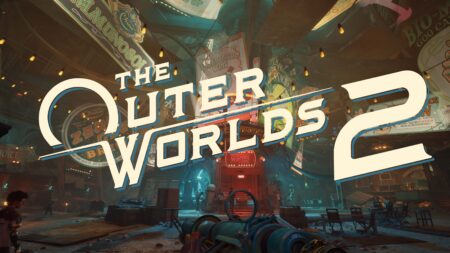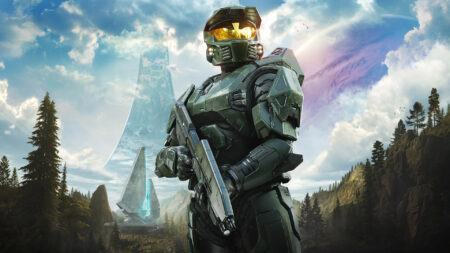In every save file, The Outer Worlds 2 keeps count, marking the time you’ve spent exploring its worlds. Mine reads: a day and eight hours. I’m sure that includes all the time I spent jetpacking across its stunning planets, landing sliding slow-motion headshots like a spacefaring gunslinger. It should also include the hours I spent talking to its fantastically written characters, or the moments I toggled from first to third person just to take in the magnificent art direction with these beautifully realized worlds drenched in color and satire.
What the counter can’t capture are the hours that came after. Over dinner, watching smoke curl from the grill as the chef was cooking our meal, and wondering if I should’ve taken that deal with the Order or Auntie’s Choice. On my afternoon run through sun-drenched hills, debating whether my next perk point should be combat-focused or dialogue. Or laughing to myself in an elevator with my family, listening to that tinny tune that could’ve been piping straight from a Spacer’s Choice speaker.
The Outer Worlds 2 lingered. It pulled me back to a time when choices carried weight, when characters felt alive, and when a world even one made of dust and ruin could feel like home. A time when I wandered another frontier, under another sun, across that old, mythical stretch of desert.
They call you the Commander now, but in the weight of every choice and the doubt that follows, I can still feel the Courier’s shadow. And feeling it again, out here in space, feels less like coming back, and more like watching the Mojave’s dust find its way among the stars.
Disclaimer: (No spoilers here. Played on Xbox Series X. My playthrough was almost completely bug-free, just one bugged area, which crashed the game a couple of times.)
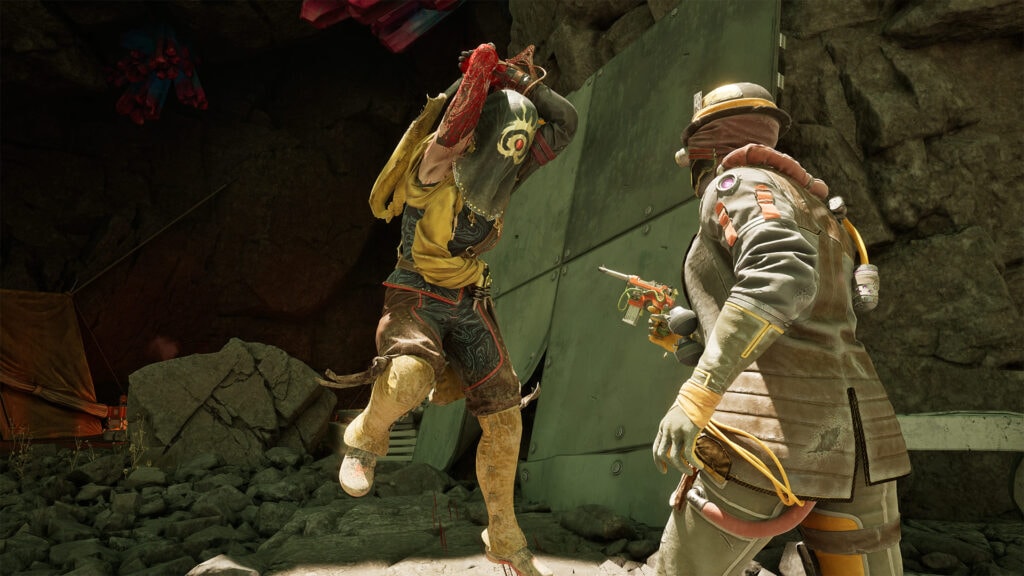
Halcyon was never a paradise, but it had a strange charm to it. A place where everything was run by corporations pretending to care and the poor people meant to shoulder the decisions of their leaders. It was ridiculous and dark, but it knew what it was: a world where everyone had a price tag and a slogan to match.
Arcadia isn’t that at all. Arcadia is colder, stricter, and built on the idea that order is peace. When I first started playing, I foolishly thought it was another corporate colony. But it isn’t. Arcadia is ruled by a government that acts just like authoritarian ones in real life. The logos and propaganda may not be corporate, but the foreboding sense of control is the same.
You’re with the Earth Directorate, an outfit that’s supposed to keep things in check but mostly just watches from the sidelines. They like to remind you that you’re important, you are humanity’s finest, protectors of the void, but out here, that title feels more branding than truth. Few factions even acknowledge your group’s so-called presence. You’re called Commander, like it means something, but no one really looks at you that way aside from your crew. The Protectorate runs things their way, and they don’t care much for outsiders.
How these factions carry themselves says everything about who they are. The Protectorate dresses in intimidating formality. Clean lines with black and red tones, the kind of people who want their authority to look effortless.
Auntie’s Choice, on the other hand, bathes in its own brand image. Bright suits, and even bright sets of armor, matched with endless smiles, and dead enthusiasm behind the eyes/helmets. Every billboard and broadcast screams optimism, even when the message is hollow.
The Order of the Ascendant looks the opposite: robes and metallic trimmings that blur the line between science and faith. They talk in formulas and metaphors, convinced the universe itself can be solved like an equation. Their main hub, a sprawling garden of glass and circuitry, feels like the perfect visual for them, beautiful, logical, and completely detached from reality.
If the Protectorate is the Legion in a clean uniform, then Cleo’s Choice is Mr. House with a marketing team. A merger of Auntie Cleo and Spacer’s Choice, they run entire sectors under one brand. Every time I walked through one of their cities, it felt like the air itself was trying to sell me something.
The more time I spent in Arcadia, the more it reminded me of the Mojave. Not the place, but the feeling being caught between people who all believe they’re right, and realizing they might all be wrong.
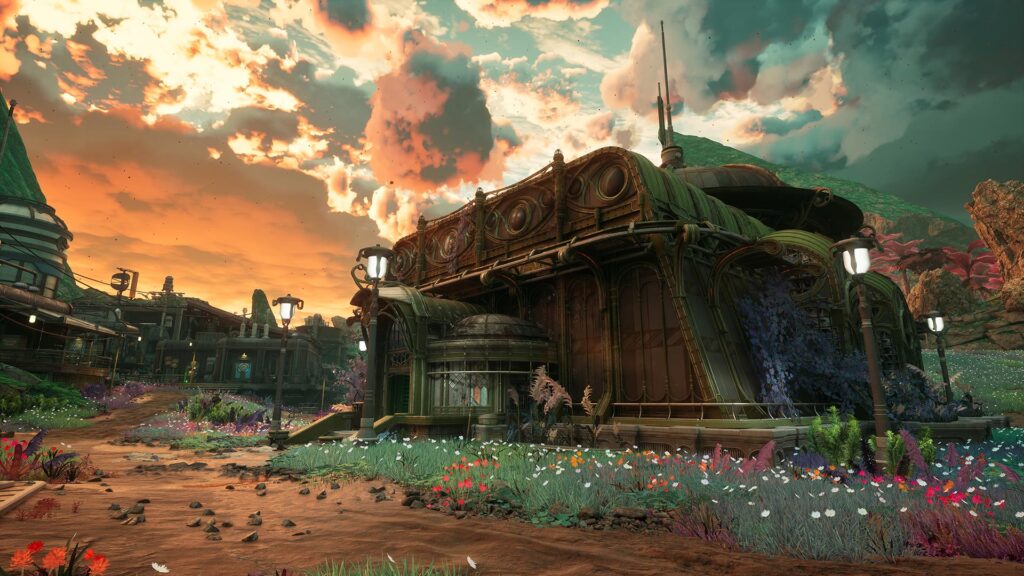
The beauty of The Outer Worlds 2 is that it never tells you IF you’ve made the “right” call. Every decision feels like a coin flip. You think you’ve landed heads, but hours later, someone’s bleeding because of it. There were moments I sat there staring at the dialogue wheel longer than I’d like to admit, wondering if I was about to ruin a questline or save someone I didn’t even like, making me reload my save all over again.
What surprised me most was how these choices reach further than the npcs you talk to. They shape the world around you in ways that sneak up later. The game doesn’t always give you a cutscene for what your decisions have caused, It lets you feel it through the world breathing differently. Sometimes it’s satisfying, sometimes it’s cruel. I once convinced a gullible soldier to help me in a tough combat section, and it felt brilliant until I ran into him later, jobless and angry.
And when the world shifts because of something you said hours ago, it hits harder than you expect. I wasn’t ready for how much of it would stick with me. If there’s one thing to take away from all this, it’s that your decisions matter here.
One line in some throwaway conversation with what you think is a no-name NPC can twist the outcome of an entire quest, and you won’t even realize it until it’s too late. Praise to Obsidian for building such a beautiful kaleidoscope of choices and consequences in a world where every word feels like a ripple. It’s the kind of design that makes you want to start a fresh playthrough, just to see how else it could have gone.
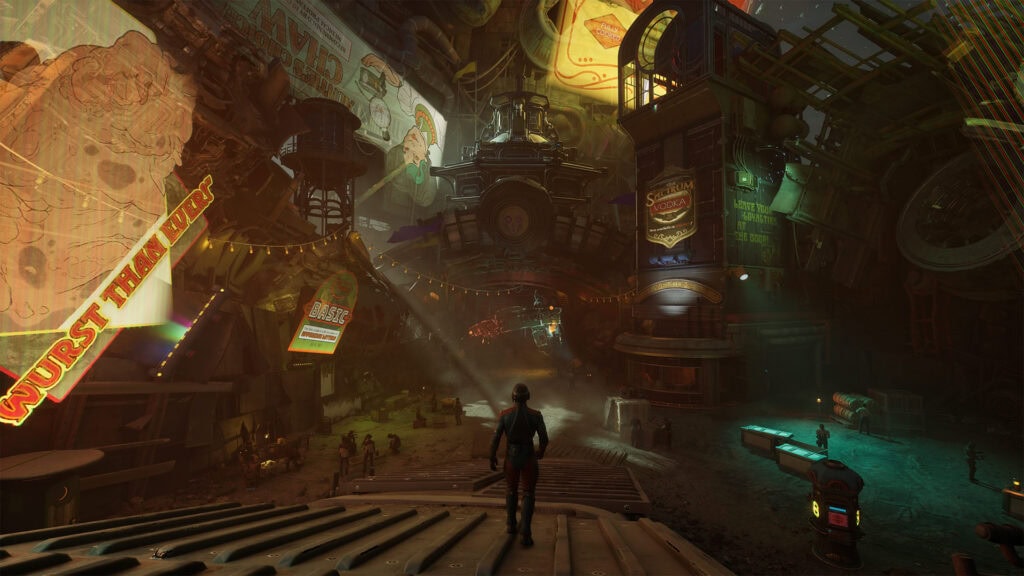
Character creation in The Outer Worlds 2 starts with familiar, sliders, stats, the usual. But it goes further in ways that caught me off guard. You can swap out every limb for prosthetics, a detail the team said came from their World War I influences, showing how people live with the horrors of war. It’s a small touch that says a lot about the kind of care the team is showing this world of theirs.
Then you pick your background. These shape how people see you. I went with Gambler for my first run, which meant that I could challenge NPCs to bets, talk my way through bad situations, even make risky calls that somehow paid off. Each background, from Lawbringer to Ex-Convict to Professor, comes with its own tone, its own voice in the story. You start to feel like the world is reacting to who you are, not just what you’ve leveled.
Perks and skills have been expanded too, with a mind boggling ninety of them perks to unlock. They don’t sit in neat categories, what seems like dialogue perks can open up new combat tricks, while combat perks might let you talk your way out of a fight. Favorites of mine include Charlatan that makes your lies smoother, On Your Feet lets you pull a downed companion back into the fray from a distance, and the game even lets you favorite perks you can’t pick yet, which is a small thing but a smart one. It keeps your build focused, like the game’s saying, “We know you’re planning something.”
And then there are the flaws, the part that really makes this system sing. You’re asked to pick a weakness, and every one of them changes how the world treats you. Abrasive turns people off the moment you open your mouth. Sickly makes every fight a risk. Dumb locks some dialogue options, but the lines it opens instead are often hilarious, sometimes even genius.
Oh yeah, just like the first game, flaws find you. They show up mid-game, offered after you’ve played long enough for the universe to notice how you behave. Maybe you’ve spent too much time crouched, and the game decides you’ve earned Bad Knees. You move faster while sneaking, but now every time you crouch your knees echoes loud enough to alert patrolling guards Or maybe you’ve been relying on your companions too much, and suddenly you’re labeled Dependent, dealing less damage on your own, but hitting harder when someone has your back.
Each flaw is a little window into who your character has become. Every time one is offered, the game pauses to let you think: take the hit now, get something good in return, or stay “perfect” and maybe miss out on a quirk that could define your whole run. The result is a system that turns weakness into storytelling. Your failures, your habits, even your bad luck become part of the roleplay. And it gets exciting whenever you start seeing those little pop-ups that offer something negative for something potentially great. Potentially is the keyword there.
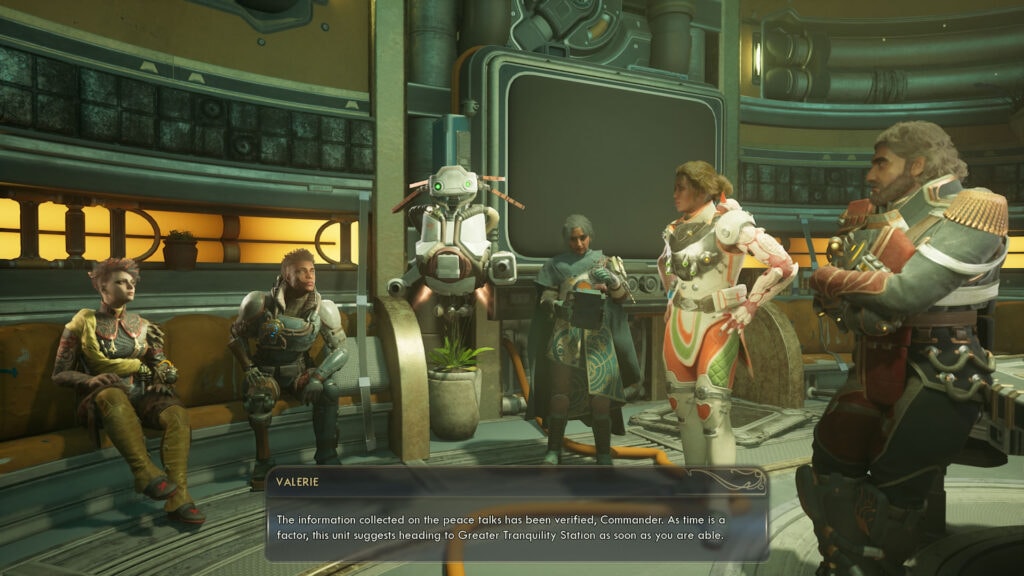
If there’s one thing Obsidian’s always nailed, it’s the people you travel with. In The Outer Worlds 2, that hasn’t changed, it might’ve even gotten better. Every companion feels like a full person, with their own fears, philosophies, and half-broken dreams. They don’t just follow you around waiting to shoot something; they talk, they argue, they make fun of you, and sometimes they make you stop and think.
There’s a real sense of camaraderie in this crew. One minute, they’re debating the best methods of murder, and the next, Val, the ship’s ever-efficient robot, is ordering a very imposing figure to sweep the floors. These people don’t fit neatly anywhere, and maybe that’s why they fit together. Each of them carries their own regrets, little pieces of history they’re trying to put back in place.
They’re just as distinct in combat as they are in conversation. In the first Outer Worlds, you could order your squad around mid-fight, but not this time. The only direct control you have is commanding their special attacks, and that small limitation actually makes them feel more alive.
Each one fights the way they are. Some are precise and methodical, calling out vulnerabilities like a seasoned tactician. Others rush in swinging, equal parts unpredictable and blood thirsty but effective. One companion might patch you up, while another leaps into the fray with a wide-sweeping hammer. Their personalities bleed into their fighting styles, calm, reckless, or somewhere in between. And it sells the illusion that you’re part of a team, not just a party menu.
What stands out most is how they react to you. They don’t just stand behind your choices; they respond to them. Sometimes they’ll question you, push back, or even change their views because of what you’ve done. There was one conversation that made my hair stand on end, not because of what I said, but because of how one of them backed me up. It was this perfect mix of writing and performance, a kind of emotional choreography that makes everything feel earned.
The devs warned me that companions can turn hostile if your relationship sours or you attack their allies. Nothing says “team bonding” like realizing you’re one bad decision away from being vaporized by your best friend. Luckily this hasn’t happened to me yet. Maybe next playthrough.
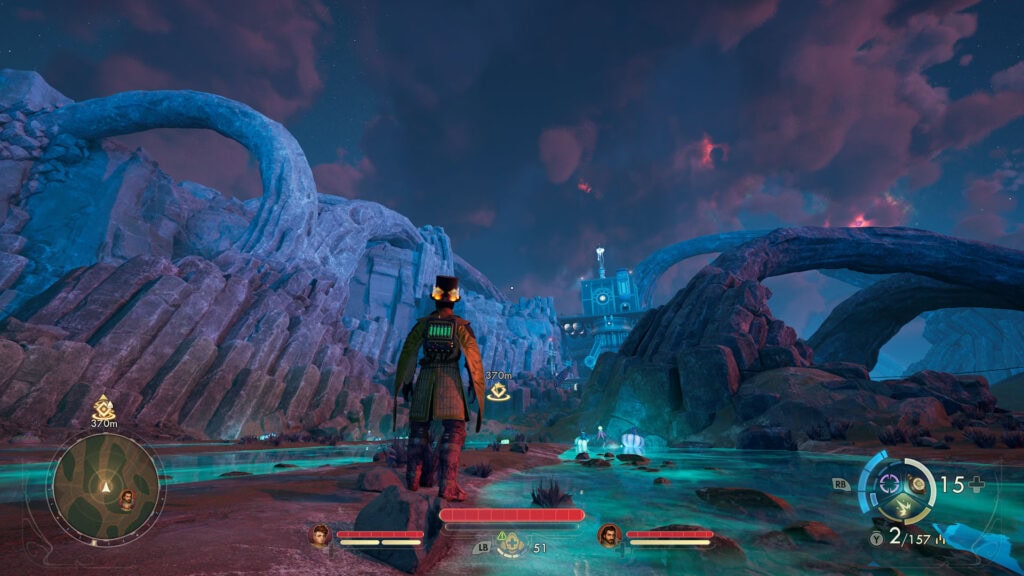
Third-person mode makes a solid return here, feeling more natural and better integrated than before. It’s smoother, more stable, and clearly designed with both preference and accessibility in mind. Great news for third-person fans and anyone who gets queasy in first-person. That said, I still found myself sticking with first-person most of the time; the camera’s pulled back far enough that I’d occasionally miss pickups or smaller details. One time it happened and I had to run around for a good ten minutes looking for a key.
Movement in The Outer Worlds 2 feels smoother this time. Traversal is fast, fluid, and almost too modern in some ways, like Obsidian looked at the movement-heavy shooters of today and said, “We can do that too.” There’s a weight when you land, a bit of chaos when fights break out, and enough freedom to make every encounter feel unpredictable.
Combat itself still carries that signature Outer World’s chaos. Messy, but satisfying. Guns hit hard, melee swings have heft, and enemies come in all shapes of danger: armored enforcers, wild alien animals, and the kind of things science probably should’ve left alone. The game never takes itself too seriously either; your companions will shout cheesy one-liners straight out of an 80s action flick mid-battle. One even ordered “Commander, stop dying at once!”. I was so worried I’d get whacked, so I healed.
When I spoke with the devs, they mentioned leaning into a kind of Retrofuturism, and the weapons reflect that beautifully. Everything looks heavy, industrial, brutal with just the right hint of the future in their design. My favorite’s a revolver that kicks like a horse. SMGs feel like relics from an old war documentary, plasma pistols spit bursts of molten light, and the sniper rifles scalps enemies clean. They all feel fantastic to use, though ammo can be scarce if you’re careless. Planning matters here.
The pace of fights has picked up, too. Some enemies attack you from cover, others recklessly charge in. Those new movement tools sliding, jumping and that brief lift from your jetpack make everything feel more immediate. Gone are the days of just standing and shooting; now you’re dancing through danger, improvising your way out of tight spots. Tactical Time Dilation is back, still making you look as cool as ever in slow motion, along with other tools that I’ll avoid spoiling here.
And for the demolition enthusiasts who begged for it, grenades are finally here. They’re loud, devastating, and expensive as hell. Cleo’s Choice must’ve found a way to monetize explosions, because crafting them yourself is the only affordable option. Thankfully, scavenging across Arcadia means you’ll always have junk to turn into something useful. The crafting system feels like a proper extension of the RPG loop now, from weapon mods like silencers and holo-scopes to gear tweaks that change how you play.
The gear itself carries that same mix of absurdity and brilliance Obsidian’s known for. The Premium Moon Man Helmet, modeled after Spacer’s Choice’s mascot, boosts your damage resistance based on how much money you’re carrying. Truly capitalism at its finest. Then there’s the Calorie Counter armor, which reduces your healing efficiency but speeds up your tool recharge. It’s ridiculous, it’s clever, and it fits perfectly in this world that keeps finding logic in nonsense.
Even healing got a rework. Gone are the days of chain-chugging inhalers mid-fight. Now, every hit you take fills a tolerance gauge, and once it maxes out, healing stops until it drains. It’s a simple mechanic that adds tension and a reminder that you can’t just out-heal bad decisions.
And that’s kind of the soul of this game’s combat: every system, from your perks to your weapons, keeps pushing you to think, to improvise, to own your chaos.
The Outer Worlds 2 is truly at its best when the real fight isn’t about who shoots first, but who understands better. When words triumph over bullets, and taking the time to listen and empathize gives the story the best outcome. I think.
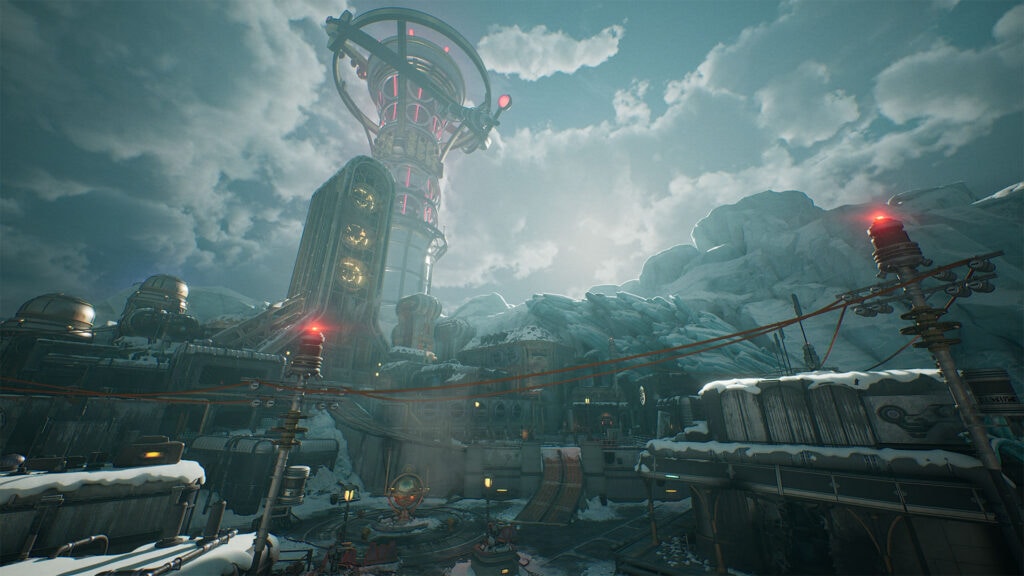
Obsidian has always taught us that the smallest choices can matter the most, even the ones that don’t feel like choices at all. It’s the same lesson they taught us long ago under a burning Mojave sun.
When your wife’s had a bad day, you can choose to take her out for sushi and watch the smoke from the grills together. When you don’t feel quite like yourself, you can choose to run those hills, lungs burning but heart lighter with every step. And when your father asks if anyone wants to go bowling, you can choose to get in the elevator not because you planned to, but because sometimes love sounds like a simple “yeah, sure.”
The Outer Worlds 2 is all that I could’ve ever hoped it would be. Funny, smart, alive. It’s packed with memorable characters, sharp writing, and art direction that’ll stand the test of forever. And just like how Fallout: New Vegas was the better sequel to its predecessor (spare me the pedantry), this feels like a confident step up, even Auntie Cleo would call it character growth.
This review is based on a review copy provided by Microsoft.
The Outer Worlds 2 (Xbox Series X)
The Outer Worlds 2 is all that I could’ve ever hoped it would be. Funny, smart, alive. It’s packed with memorable characters, sharp writing, and art direction that’ll stand the test of forever.
The Good
- Smart Writing
- Deep World
- Fun and Interesting Companions
The Bad
- Kinda messy combat
- Minor tech hiccups
